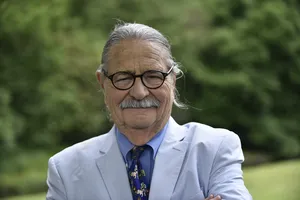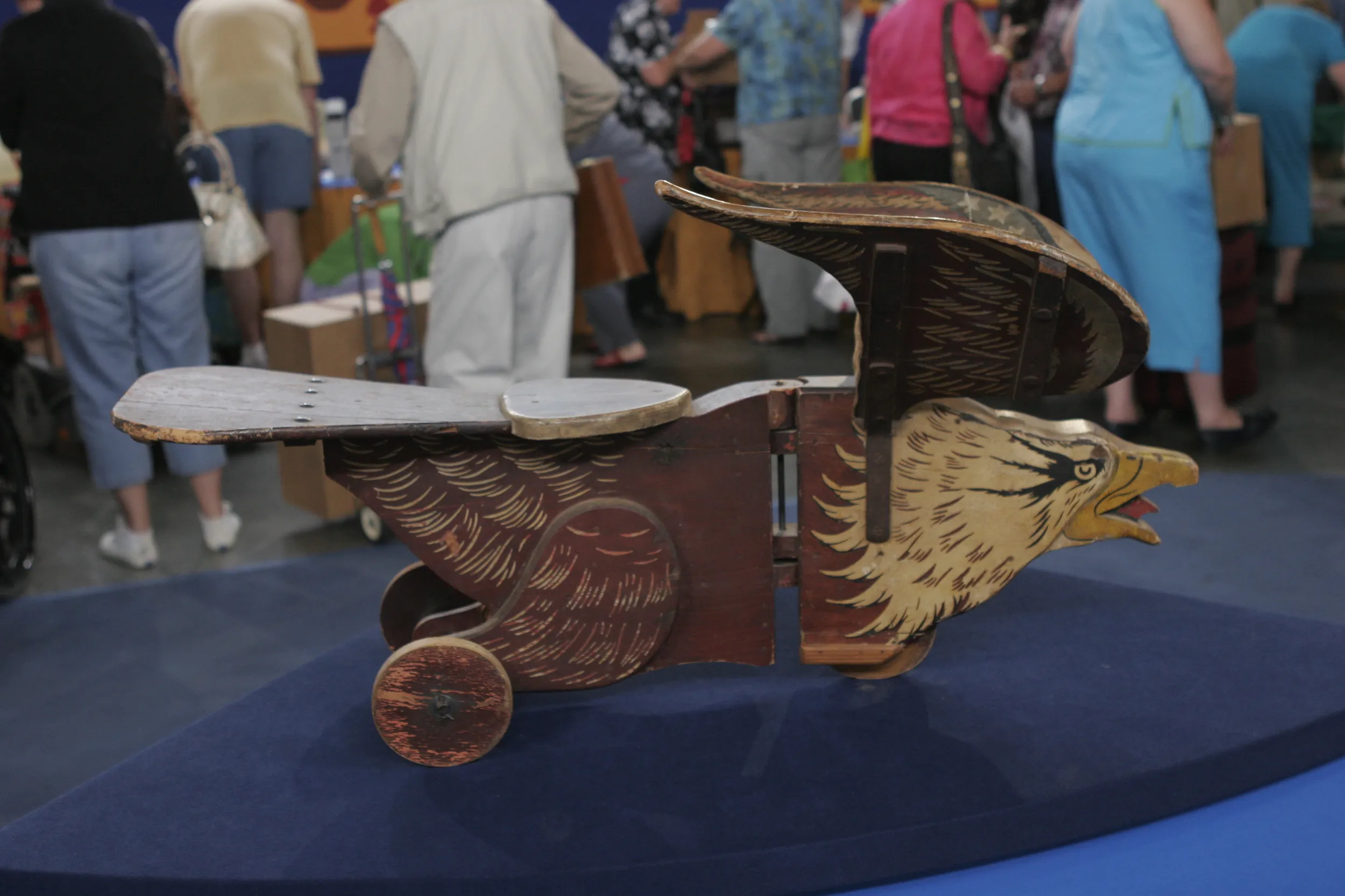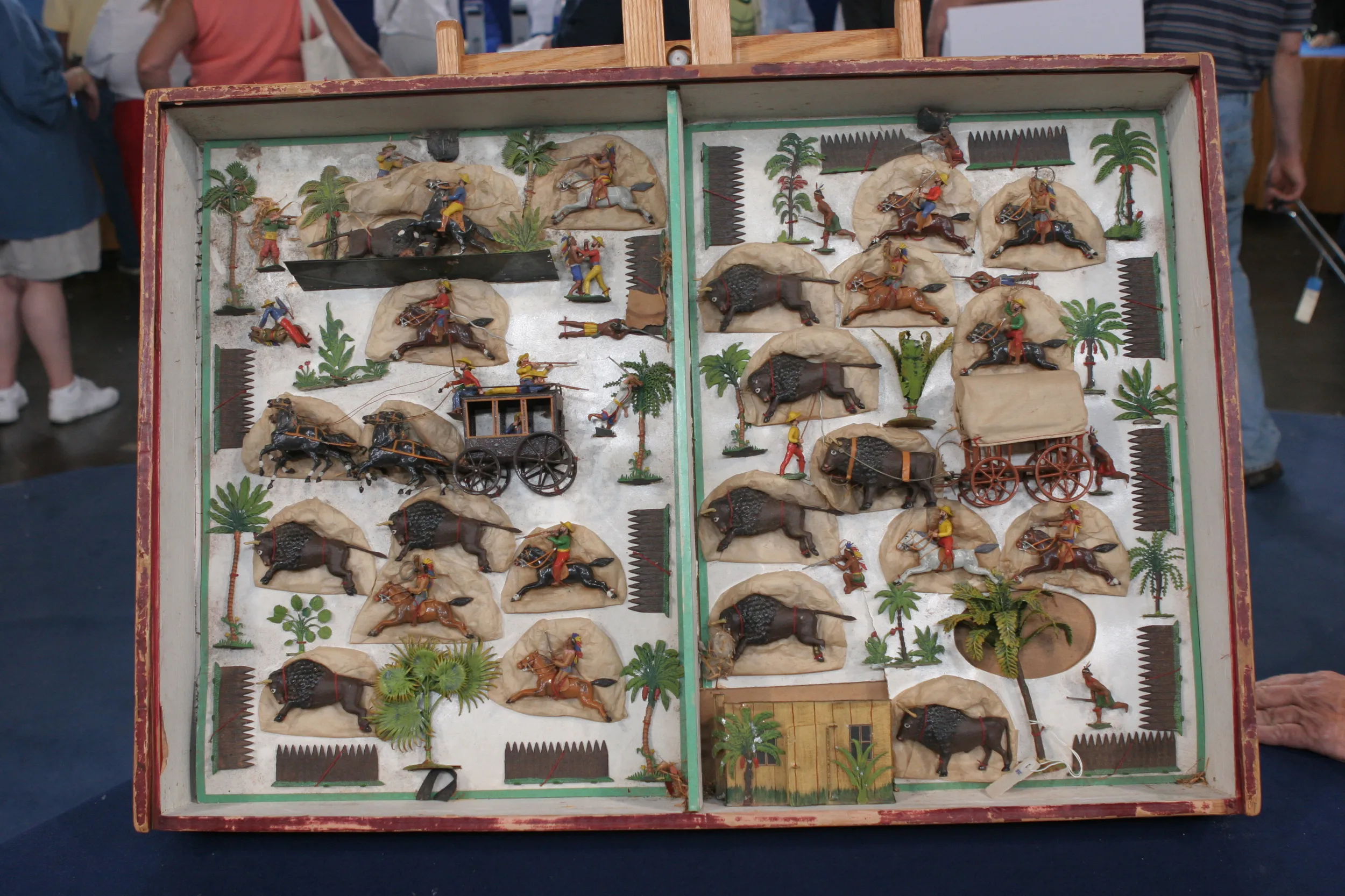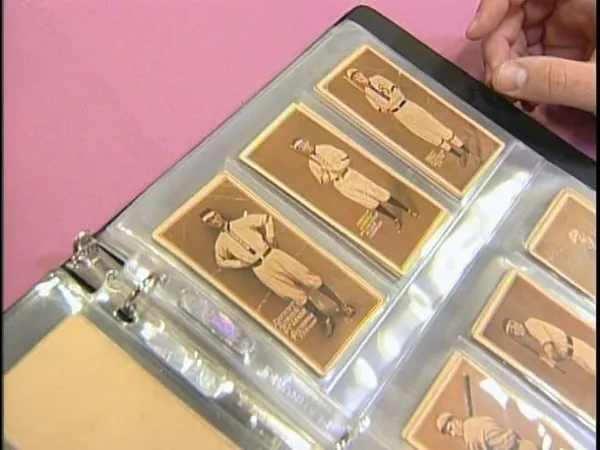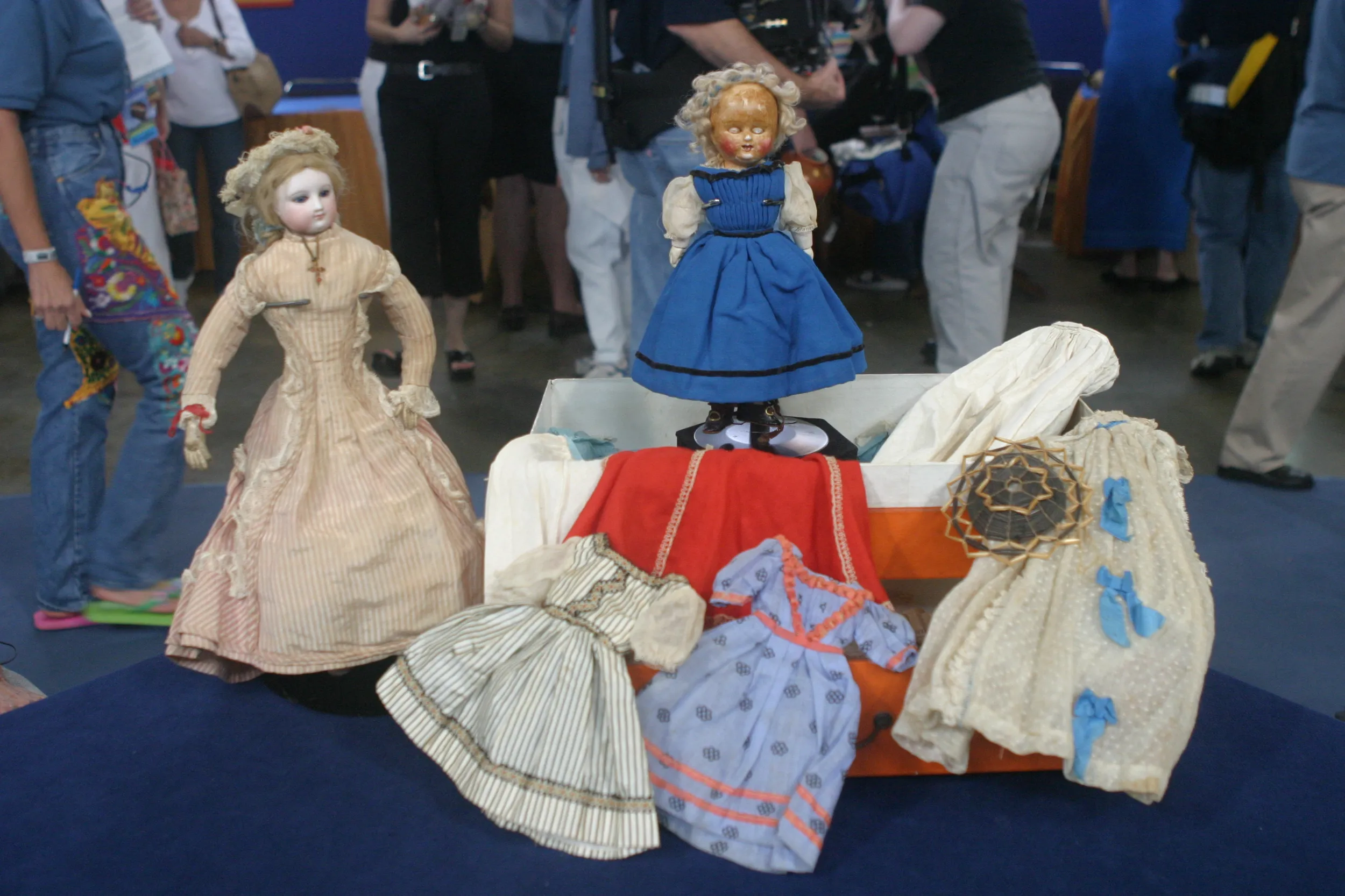GUEST: I bought them at an antique shop probably about 25 years ago. I think I paid between $125 and $150 for the camel.
APPRAISER: Uh-huh.
GUEST: And around $75 for the monkey.
APPRAISER: Well, you've done a little research on these.
GUEST: A little.
APPRAISER: And tell us what you found.
GUEST: Um, found a picture of the camel from a museum site, I believe, in Switzerland.
APPRAISER: Uh-huh.
GUEST: The monkey I didn't find.
APPRAISER: Mm-hmm, so you found this and you identified the maker and the year, right?
GUEST: Steiff, and the one that I saw was 1908.
APPRAISER: 1908, yeah. Now, what did you want me to tell you about it?
GUEST: He had some bad hole damage.
APPRAISER: Mm-hmm.
GUEST: I did a little bit of repair. There's a lot that I didn't repair. I want to know how that helps or hurts.
APPRAISER: I see.
GUEST: I added these tassels.
APPRAISER: This is original.
GUEST: This is original.
APPRAISER: Yeah.
GUEST: These are original.
APPRAISER: Came with it, yeah, yeah.
GUEST: These little gold ones were added.
APPRAISER: Okay. These kinds of repairs don't really affect the value-- they actually help stabilize the toy. I generally would leave small holes alone. But anything where you have a large hole does not hurt the value. The tassels-- definitely leave them, they add to it. If anybody was upset with them, they could remove them. You're absolutely right about the age, 1908, and it is Steiff. And we've had Steiff on this show before. But generally, what we see are Steiff teddy bears. But the non-bear-type Steiff is also very, very desirable. And particularly when you get into this kind of size. This is probably the largest of the camels that they made in that era, with the cast-iron wheels, and basically, he's in pretty darn good condition. Most Steiff animals do have buttons in their ear.
GUEST: Right.
APPRAISER: Everybody's looking for the button. And you can see on the monkey, there was a hole where he did have a button. I'm not so sure that he had a button in his ear. There's no remnant of it, and I'm not 100% sure that they put buttons in the largest animals like this. I would say on today's market at auction-- and also, I think a retail dealer would probably ask about the same-- around $4,000 to $5,000.
GUEST: Really? All right.
APPRAISER: So, uh... I mean, I think it was a good buy for about $100...
GUEST: Is that together or the camel?
APPRAISER: Oh, no, that's just the camel.
GUEST: Okay.
APPRAISER: The monkey-- I think they called him Jocko the Monkey-- he's also quite early, quite large, with the very large arms. He has some condition problems.
GUEST: Pretty bald, yes.
APPRAISER: He's losing some, getting bald here on the back. But I would say he'd be in the $1,200 to $1,500 range.
GUEST: Oh, that's nice.
APPRAISER: So I think you did very well. I think they go great together.
GUEST: Yeah.
APPRAISER: And I'm really glad you brought them in.
GUEST: Thank you so much.
APPRAISER: Thank you for bringing them in.
